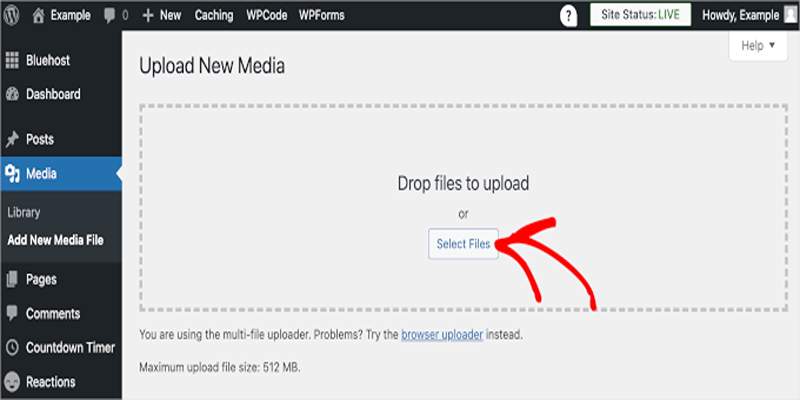Task Prioritization Techniques: 10 Proven Methods
Achieving goals along with maximizing productivity depends on the successful organization of vital tasks. Appropriate methods enable you to direct your efforts toward the most vital activities while maximizing the utilization of available time. A complete list of ten task prioritization approaches follows to guide your project organization and productivity improvement.
Introduction to Task Prioritization

You can determine the first tasks for execution by assessing tasks through importance and urgency ratings. By implementing this process, you will reduce stress while controlling your workload and immediately handle essential responsibilities. Task priorities play a critical role in achieving success since they help you manage individual work and universal staff deliverables.
1. Priority Matrix (Eisenhower Matrix)
The Eisenhower Matrix represents a common strategic approach that people use to determine their task order. The four-parts system arranges tasks according to priority levels which indicate their urgent status and their importance level.
Urgency | Important | Not Important |
|---|---|---|
Urgent | Urgent & Important (Do First) | Urgent but Not Important (Delegate) |
Not Urgent | Important but Not Urgent (Schedule) | Not Urgent & Not Important (Eliminate) |
The assumption of tasks with zero urgency and importance ought to be removed from your workload (Eliminate).
Through this assessment method you can tackle important urgent tasks like deadline fulfillment and emergencies yet send less pressing responsibilities to others for execution or elimination.
Example Table: Prioritization Techniques Comparison
Technique | Description | Best For |
|---|---|---|
Eisenhower Matrix | Categorizes tasks by urgency and importance | General task management |
MoSCoW Method | Divides tasks into Must, Should, Could, Won’t | Simplifying priorities |
ABCDE Method | Labels tasks from A (critical) to E (eliminate) | Structured prioritization |
Scrum Prioritization | Evaluates tasks based on value, urgency, and dependencies | Team projects with interconnected tasks |
Bubble Sort Method | Compares tasks directly to determine priority | Uncertain priorities |
1-3-9 Technique | Balances critical, essential, and smaller tasks | Daily task management |
Two Lists Technique | Focuses on top five tasks from a list of 25 | Eliminating distractions |
Numbering Priorities | Assigns numbers to tasks for clear ordering | Multiple urgent tasks |
Time-Boxing | Allocates specific time slots to tasks | Managing time effectively |
Effort vs. Impact Analysis | Evaluates tasks based on effort and impact | Maximizing efficiency |
2. MoSCoW Method

When using the MoSCoW Method, you can easily allocate tasks by classifying them as "Must do" (M), "Should do" (S), "Could do" (C), or "Won't do" (W).
- M in MoSCoW identifies essential tasks that absolutely need completion.
- The classification of important tasks that stand behind Must tasks belongs to the Should do (S) category.
- Tasks under category C represent desirable aspects that are non-essential.
- The category of W consists of tasks that become unneeded and enable elimination.
The evaluation process reveals important duties while removing unnecessary tasks from the workload.
3. ABCDE Method
The ABCDE Method developed by Brian Tracy organizes tasks into five ascending levels of criticality which start with A tasks.
- Tasks represent critical tasks that must start before anything else.
- The B category includes substantial work that follows the completion of A tasks.
- These tasks form category C as they belong in the necessary list but are not essential from a priority standpoint.
- The suitable assignments for delegation fit into the D category.
- The E category consists of tasks that organizations need to eliminate from their operations.
Through this approach ,you can direct your attention to vital assignments while passing lesser important tasks to others or scratching them off completely.
4. Scrum Prioritization
Scrum Prioritization functions as an agile evaluation framework that judges work assignments by their importance as well as their rapidity and interconnection requirements. This technique shows excellence when it comes to handling tasks that intertwine with one another in team-based projects. The ranking process arranges tasks in descending order so important obligations receive first priority at all times.
5. Bubble Sort Method
A direct comparison system called Bubble Sort Method determines task priority through its assessment method. You evaluate two consecutive tasks against each other to determine precedence before sorting all items from top to bottom importance. When you need direction regarding what task to initiate first the Bubble Sort Method provides effective guidance.
6. 1-3-9 Prioritization Technique
According to the 1-3-9 Technique users need to perform one critical task combined with three essential tasks and nine smaller tasks each day. With this technique you will maintain both significant tasks alongside minor assignments because it keeps priority order balanced.
7. Two Lists Technique (Warren Buffett’s Approach)
According to Warren Buffett you need first to list 25 tasks then circle your top five priorities before you focus only on those activities. All tasks after the essential ones may remain as secondary priorities.
8. Numbering Priorities
When you complete the priority matrix analysis you still have numerous urgent important tasks then assign priority numbers to them. Using this system allows users to organize their duties according to specified deadline dates and necessary completion times.
9. Time-Boxing
The time management method called Time-Boxing divides critical tasks into assigned temporal segments. The approach enables crucial assignments to get execution before lesser essential tasks consume available time frames.
10. Effort vs. Impact Analysis
The evaluation method assesses elements through their effort demands and their outcome significance. If possible start work on high-impact tasks which need minimal effort input.
Implementing Task Prioritization Techniques
Implementing these techniques requires following this procedure:
- Begin by creating a broad list containing all the tasks available.
- Residents must evaluate all tasks through an examination of their urgency versus importance levels.
- The assessment should review tasks which need preliminary accomplishment from other team members.
- Determine actual durations for all duties by evaluation method.
- Design your task plan to work on demanding assignments when your energy reaches its peak times.
- Use Prioritization Tools by implementing the Eisenhower Matrix along with the ABCDE Method.
A periodic check and modification process should be used to assess your priorities.
Benefits of Effective Prioritization
The practice of proper task prioritization delivers various positive effects.
- Higher productivity emerges when you concentrate on significant assignments to complete more work in decreased periods.
- Prioritizing important work decreases personal stress because it minimizes deadline-related workload concerns.
- Better Time Allocation Results from utilizing prioritization techniques so you maximize your productivity level.
The achievement of your established goals becomes better when you focus on assignments that support your objectives.
Common Challenges in Prioritization
Although the advantages to prioritization exist there are standard obstacles that need resolution:
Postponing obligations results in failed deadlines together with reduced work capacity.
Your concentration may become diverted through non-essential tasks or interruptions.
Taking on numerous responsibilities beyond your limits results in both performance deterioration and burnout situations.
Overcoming Challenges
To overcome these challenges:
Your productivity will increase when you establish precise goals which guide your daily work objectives.
Organizational methods along with appropriate tools will help maintain proper structure.
Design an environment that blocks disruptions which hinder productivity.
You should assign tasks to others since sharing responsibilities prevents you from taking on excessive workloads.
Conclusion
Task priority management leads to the dual achievement of productivity and success. Running your operations using the Priority Matrix together with the MoSCoW Method and ABCDE Method helps you concentrate on key tasks effectively and control your time usage. As circumstances change, you should perform periodic checks of your priorities for adjustments.
On this page
Introduction to Task Prioritization 1. Priority Matrix (Eisenhower Matrix) Example Table: Prioritization Techniques Comparison 2. MoSCoW Method 3. ABCDE Method 4. Scrum Prioritization 5. Bubble Sort Method 6. 1-3-9 Prioritization Technique 7. Two Lists Technique (Warren Buffett’s Approach) 8. Numbering Priorities 9. Time-Boxing 10. Effort vs. Impact Analysis Implementing Task Prioritization Techniques Benefits of Effective Prioritization Common Challenges in Prioritization Overcoming Challenges ConclusionRelated Articles

Deleting a Repository on GitHub: Instructions

Fix Media Upload Issues on Websites and Apps with These Steps

Effortless Steps to Convert and Upscale Video to 4K Resolution

5 Easy Ways to Repair Corrupted PDF Files Online for Free

Convert AVCHD to MOV on Windows Without Losing Quality

How to Effortlessly Convert WebM to MOV with Simple Tools

Convert Mini DV to Digital Format on Windows: A Quick Tutorial

Best Calendar Apps for Windows to Boost Productivity: Stay Organized in 2025

The 10 Best Email Apps for iPhone: Streamline Your Inbox Today

Exploring Passkeys: How They Work and Their Advantages

Which Are The 6 Best PDF Editor Apps To Simplify Your Workflow: A Guide

 suptoolbox
suptoolbox